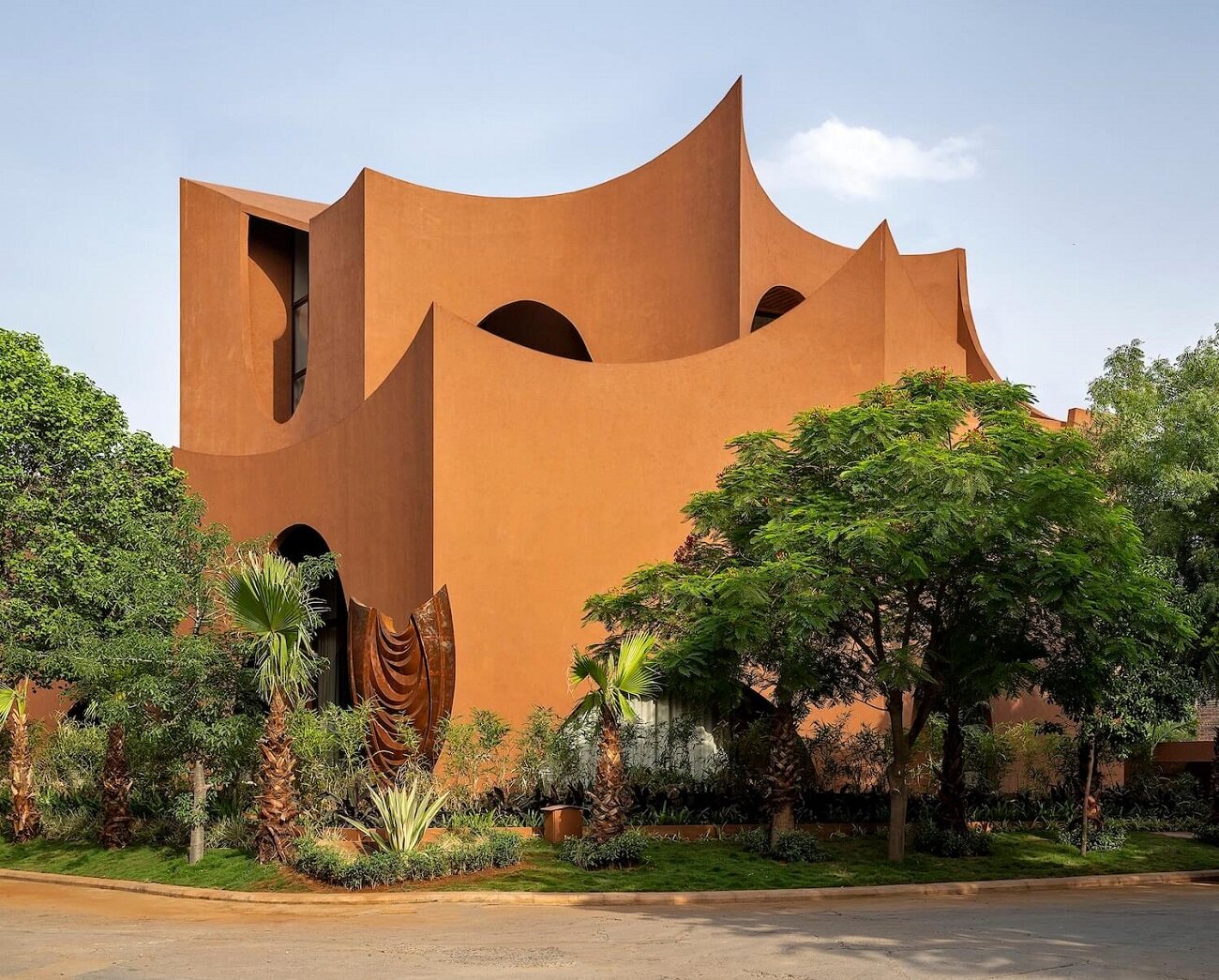#17184. Sculptural terracotta facade with organic wave-like forms

This impressive building is a striking example of organic architecture with an expressive terracotta facade reminiscent of natural forms. The smooth, curved lines create a dynamic composition that seems to emerge from the surrounding landscape. The monumental sculptural quality of the structure is achieved through plastic curvilinear volumes and asymmetrical elements.
The facade of the building lacks traditional rectangular outlines; instead, the architect uses wave-like curves and freely floating elements. Circular and semi-circular window openings are organically integrated into the overall plasticity of the structure, creating a contrasting play of light and shadow. Particularly noteworthy is the work with form – the building does not have a clear silhouette, but rather represents a fluid sculpture with variable height.
The monochrome terracotta coating emphasizes the integrity of the composition and contributes to the perception of the building as a single volume. The rich landscaping around the structure creates a harmonious contrast with the warm tones of the facade. The use of local vegetation helps integrate the modern building into the surrounding environment.
Similar techniques on a smaller scale can be adapted for a private home: smooth curves of individual facade elements, rounded window openings, monochromatic color scheme, and natural materials can give even a small structure an expressive and memorable appearance. It is important to maintain a balance between decorative elements and functionality, without overloading the composition with excessive details.